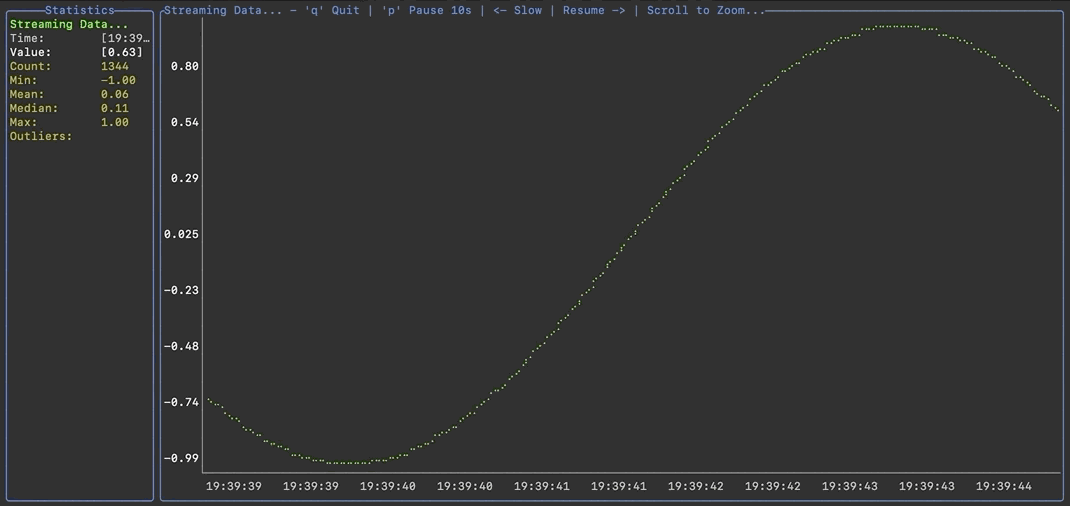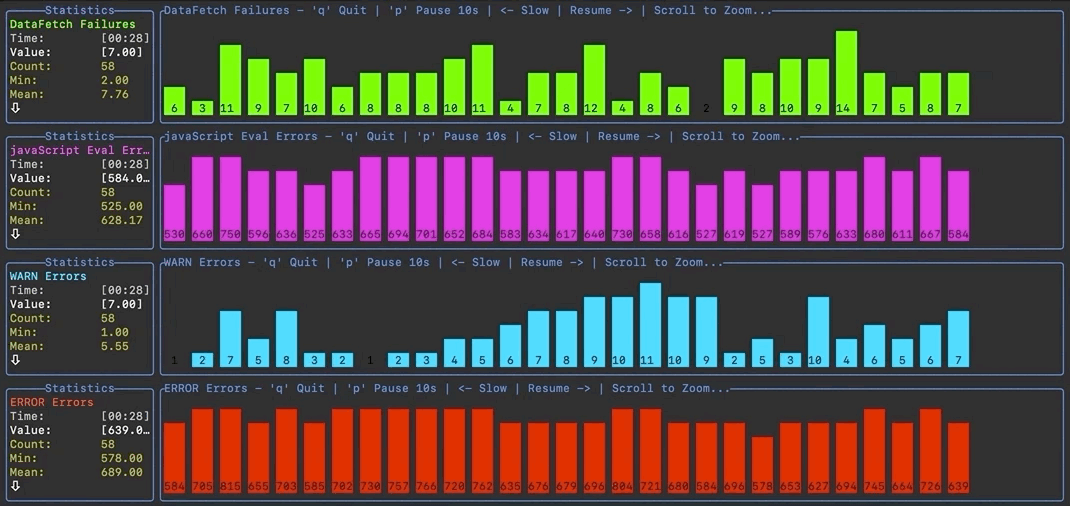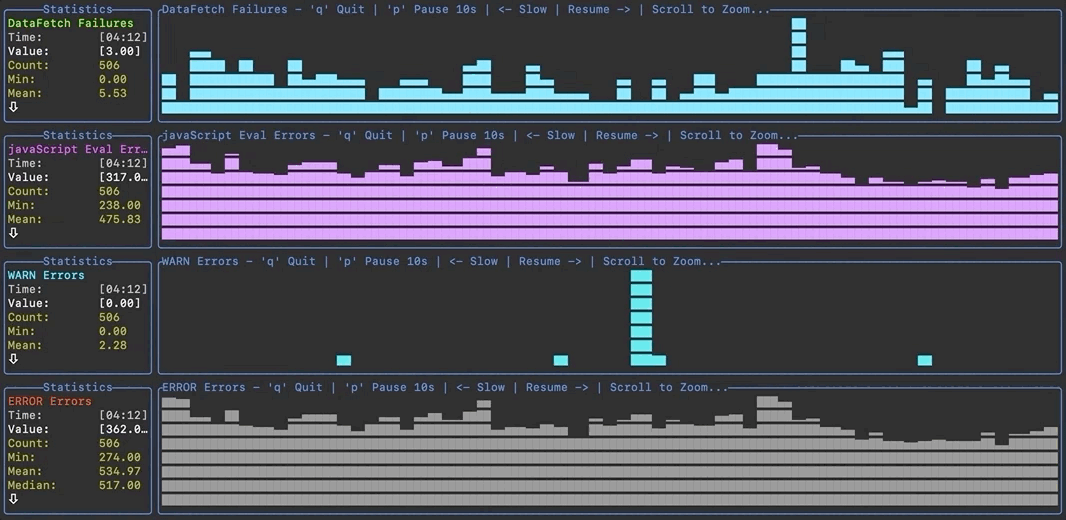Datadash Save
Visualize and graph data in the terminal
Project README
DataDash
A data visualization tool for the terminal.
Input streaming or tabular data inside the terminal via pipe or file, and an interactive graph will be generated.
Chart types
datadash currently supports following chart types:
- Line
- Plot tabular or streaming data as line graph
- Line graph supports zooming with the scroll wheel or trackpad
- Supports X-Axis Auto scaling
- Displays the average value with the -a option (customize how many values to consider using -z)
- Different color lines for each graph
- Supports scrolling for streaming data applications (disable with the --no-scroll option)
- Displays up to five graphs simultaneously
- Displays Min, Mean, Max, and Outliers
- Customize the screen redraw interval and input seek interval for high latency or low bandwidth environments
- No dependencies, only one file is required
- Sample datasets included
- Bar
- Support for Bar Graphs (Beta)
- SparkLine
- Support for SparkLine Graphs (Beta)
Streaming Data: (Linechart)

Streaming Data: (Barchart)

Streaming Data: (SparkLines)

Demo (Streaming data):
This will continue scrolling to the right, displaying the most recent data first and removing the older data to the left.
seq 4000 | awk 'BEGIN{OFS="\t"; print "x"}{x=$1/10; print cos(x) system("sleep 0.01")}' | ./datadash --label-mode time --scroll
Tabular Data:

Demo: (2 columns of data):
seq 4000 | awk 'BEGIN{OFS="\t"; print "x","sin(x)"}{x=$1/10; print x,sin(x); system("sleep 0.02")}' | ./datadash --label-mode time
Line graph Demo: (6 columns of data) w/ grey average line:
seq 4000 | awk 'BEGIN{OFS="\t"; print "x","sin(x)","cos(x)", "rand(x)", "rand(x)", "rand(x)"}{x=$1/10; print x,sin(x),cos(x),rand(x),rand(x),rand(x); system("sleep 0.02")}' | ./datadash -a
Installation (and demo)
go get -u github.com/keithknott26/datadash
go build cmd/datadash.go
./datadash tools/sampledata/5col-errors
datadash can accept tabular data like CSV, TSV, or you can use a custom delimiter with the -d option. The default delimiter is tab.
Input Methods
Input data from stdin or file.
$ cat data.txt | datadash
$ datadash data.txt
Data Structure
Below are examples of the accepted data structure. More examples can be found under /tools/sampledata
Streaming Data (1 graph):
50
60
70
3 Columns (2 graphs): (\t is the tab charachter)
time\tRowLabel1\tRowLabel2
00:00\t50\t100
00:01\t60\t90
00:02\t70\t80
00:08\t80\t70
23:50\t10\t10
Arguments
$ usage: datadash [<flags>] [<input file>]
Flags:
--help Show context-sensitive help (also try --help-long and --help-man).
--debug Enable Debug Mode
-d, --delimiter="\t" Record Delimiter:
-m, --label-mode="first" X-Axis Labels: 'first' (use the first record in the column) or 'time' (use the current time)
-s, --scroll Whether or not to scroll chart data
-a, --average-line Enables the line representing the average of values
-z, --average-seek=500 The number of values to consider when displaying the average line: (50,100,500...)
-r, --redraw-interval=10ms The interval at which objects on the screen are redrawn: (100ms,250ms,1s,5s..)
-l, --seek-interval=20ms The interval at which records (lines) are read from the datasource: (100ms,250ms,1s,5s..)
Args:
[<input file>] A file containing a label header, and data in columns separated by a delimiter 'd'. Data piped from Stdin uses the same format
A graphing application written in go using termdash, inspired by termeter.
License
MIT
Open Source Agenda is not affiliated with "Datadash" Project. README Source: keithknott26/datadash
Stars
238
Open Issues
5
Last Commit
1 year ago
Repository
License
